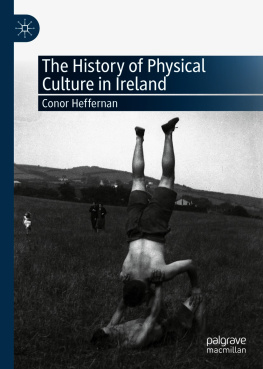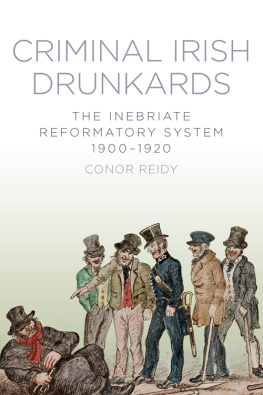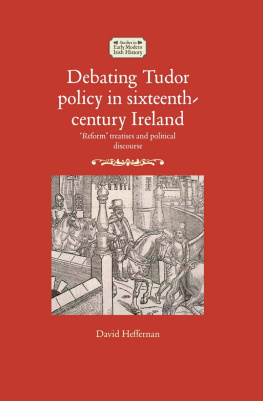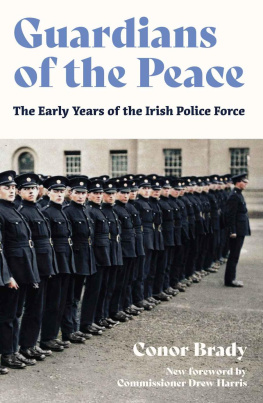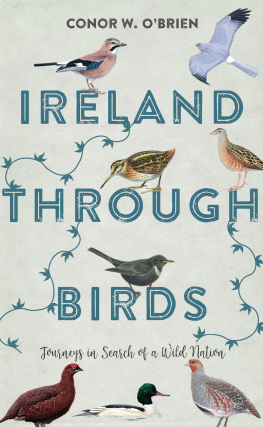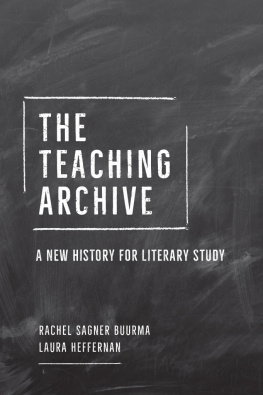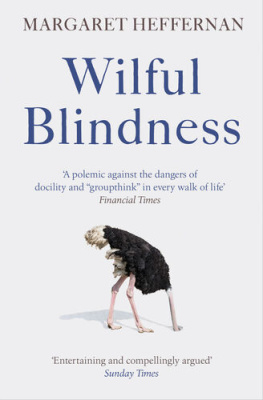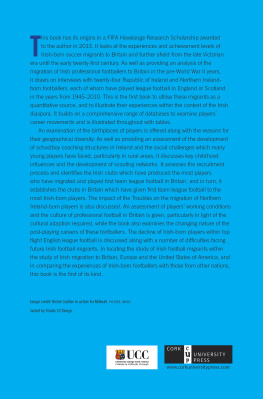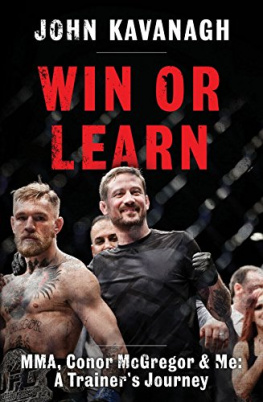Conor Heffernan - The History of Physical Culture in Ireland
Here you can read online Conor Heffernan - The History of Physical Culture in Ireland full text of the book (entire story) in english for free. Download pdf and epub, get meaning, cover and reviews about this ebook. publisher: Springer International Publishing, genre: History. Description of the work, (preface) as well as reviews are available. Best literature library LitArk.com created for fans of good reading and offers a wide selection of genres:
Romance novel
Science fiction
Adventure
Detective
Science
History
Home and family
Prose
Art
Politics
Computer
Non-fiction
Religion
Business
Children
Humor
Choose a favorite category and find really read worthwhile books. Enjoy immersion in the world of imagination, feel the emotions of the characters or learn something new for yourself, make an fascinating discovery.
- Book:The History of Physical Culture in Ireland
- Author:
- Publisher:Springer International Publishing
- Genre:
- Rating:3 / 5
- Favourites:Add to favourites
- Your mark:
- 60
- 1
- 2
- 3
- 4
- 5
The History of Physical Culture in Ireland: summary, description and annotation
We offer to read an annotation, description, summary or preface (depends on what the author of the book "The History of Physical Culture in Ireland" wrote himself). If you haven't found the necessary information about the book — write in the comments, we will try to find it.
The History of Physical Culture in Ireland — read online for free the complete book (whole text) full work
Below is the text of the book, divided by pages. System saving the place of the last page read, allows you to conveniently read the book "The History of Physical Culture in Ireland" online for free, without having to search again every time where you left off. Put a bookmark, and you can go to the page where you finished reading at any time.
Font size:
Interval:
Bookmark:
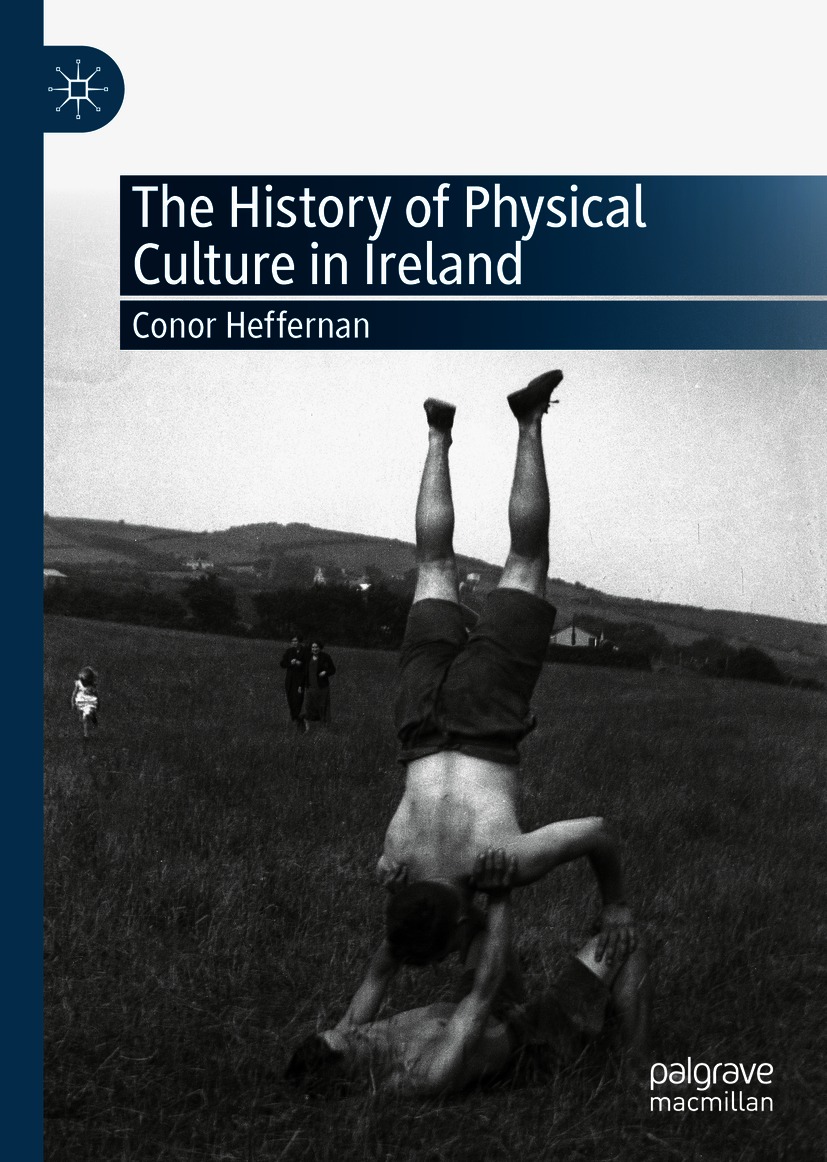

This Palgrave Macmillan imprint is published by the registered company Springer Nature Switzerland AG.
The registered company address is: Gewerbestrasse 11, 6330 Cham, Switzerland
Physical culture is broadly understood as a late nineteenth- and early twentieth-century phenomenon concerned with purposeful exercise. Despite its study in other parts of Europe, Asia and North America, its emergence in Ireland has not previously received thorough academic attention. In addressing this gap, this book examines the rise of physical culture in Ireland in the late nineteenth-century and traces its development across the following four decades. In doing so, the reasons behind Irelands fascination with physical culture are discussed. Like other European nations, Irelands physical culture movement was the result of decades of change in transport, leisure, politics and consumption. In effect, this was an Irish manifestation of a much larger global phenomenon and this was reflected in Irishmens and womens continued consumption of British and American physical culture goods and ideas. Throughout the forty years covered, physical culture systems were used for a variety of purposes by a variety of groups. For educators, it was cast in terms of academic success and correct development. For the state, it became a means of establishing distinct and autonomous identities, while for individuals, physical culture exercises came to be understood both as a means of diversion and a means of challenging, or conforming to, desirable societal identities.
What does the study of Irish physical culture contribute to Irish historiography and the study of physical culture more generally? In the first instance, the research highlights the depth and diversity of physical culture in Ireland, an interest often alluded to in existing historical works but never fully expanded upon. Secondly, the examination of physical culture in military, educational and recreational fields highlights previously understudied aspects within these areas of research. Finally, the history of physical culture in Ireland is located within the wider context of Irish history, and accordingly, the book offers a contribution to that history, noticeably in respect of war, health, gender and the role of the state.
This work would not have been possible without the generosity and funding by the Irish Research Councils Government of Ireland Postgraduate Scholarship, Universities Irelands History Bursary, the North American Society for Sport Historys Travel Grant and University College Dublin (UCD)s Lord Edward FitzGerald Memorial Fund. Through these bodies, I was able to conduct research in Great Britain, the United States and Ireland in addition to presenting at numerous conferences.
In addition, this work benefitted from the patience and kindness exhibited by archivists and librarians towards my often-confused requests. Their bemusement was no doubt shared by the countless individuals who have indulged my ramblings since beginning this research. Friends made from working groups and conferences, on both sides of the Atlantic, have proved a steady source of support during research. Those already working in the field of physical culture, including Professor Patricia Vertinsky, Professor Charlotte MacDonald, Dr. Joan Tumblety, David Chapman, Randy Roach and Dr. Keith Rathbone, displayed a great deal of academic generosity, as did sport historians Dr. Dave Day, Margaret Roberts and Dr. Nicholas Piercey. I am particularly indebted to those working at the Stark Center at the University of Texas namely, Cindy Slater, Ryan Blake, Geoff Schmalz, Christy Toms, Dr. John Fair, Dr. Kim Beckwith, Dr. Thomas Hunt and Dr. Tolga Ozyurtcu. Aside from my Ph.D. advisor, Dr. Paul Rouse, Professor Jan Todd and the late Dr. Terry Todd have inspired and improved my work at several turns. As in so many other physical culture dissertations, their contribution here deserves mention.
Advice, friendship and good humour were found at several turns in universities, conferences, workshops, gyms and through co-authors. Thanks then to Conor Curran, Aishwarya Ramachandran, Nevada Cooke, Philip Chipman, Scott Hamilton, Phillipa Levine, Brad Love, Sophie Lalande, Sean Donnelly, Tim Ellis, Lisa Taylor, Amanda Callan-Spenn, Raf Nicholson, Matt McDowell, Aidan Beatty, Geoff Levett, Dill Porter, Gary James, Patrick Bernhard, Jacqueline Hayden, Samantha Oldfield, Cormac Moore, Mike Cronin, Tom Hunt, Liam OCallaghan, Matthew OBrien, Julien Clenet, Helena Byrne, Maeve ORiordan, Conor Murray, Katie Liston, Shane Browne, Krystal Carmichael, Anne Dolan, Aoife Cranny Walsh, Eimear Farrell, Joseph Quinn, Nick English, David Tao, David Gentle, Pearse Reynolds, Michael Murphy, James Grannell, Zeljka Doljanin, Leanne Waters, Marisol Corbitt, Audrey McNamara, Katie Mishler, David McKinney, Niamh Kelly, Susannah Riordan, David Kerr, Ellen Murphy, Victoria Felkar, Rob Lake, Simon Eaves, Alec Hurley, Ryan Murtha, Andrew Hao, Tanya Jones, Lucy Harvard and Lesley Steinitz. To those who I have forgotten, please forgive a scattered mind! Thanks, or blame, must also be given to training partners and coaches from numerous gyms and groups including, but not limited to, Petter, Karl, Tracy, Darren and Eoin from Phoenix Performance Centre. In particular, Petter and Karls many stories about physical culturists from the past planted a seed in a then budding mind. Members of the Fitness League proved gracious and kind in their suggestions and histories. More importantly they invited me into an amazing community of individuals. Finally, Rocky, Patsy, Mick and the men from Hercules Gymnasium gave advice and jokes in good measure.
Font size:
Interval:
Bookmark:
Similar books «The History of Physical Culture in Ireland»
Look at similar books to The History of Physical Culture in Ireland. We have selected literature similar in name and meaning in the hope of providing readers with more options to find new, interesting, not yet read works.
Discussion, reviews of the book The History of Physical Culture in Ireland and just readers' own opinions. Leave your comments, write what you think about the work, its meaning or the main characters. Specify what exactly you liked and what you didn't like, and why you think so.

